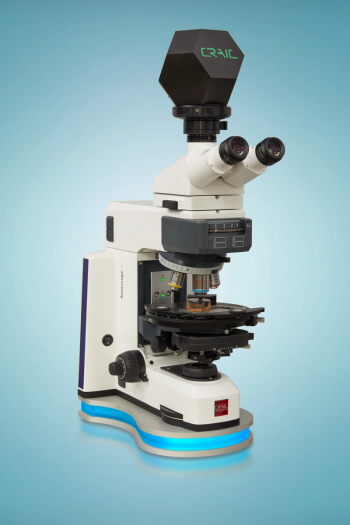
MS Trends Discussion from ASMS 2006
Welcome to the May issue of The Wavelength. This month's edition looks at emerging trends in mass spectrometry in an interview with Jennifer Krone, product manager LC-MS with Hitachi High Technologies America, Inc. (Dallas, Texas).
Which MS technique do you think is growing the fastest at the moment (i.e., LC-MS, HPLC-MS, ICP-MS, etc.)? Which do you think has the greatest potential for future growth?
Krone: In my opinion, the hyphenated technique of LC-MS both offline (LC-MALDI MS) and online seems to be growing the fastest. Most instrument vendors are now offering an LC front-end solution for the mass spectrometer, which makes integrating the two techniques much more seamless. The combination of high-end HPLCs with high-end hybrid mass spectrometers partners reproducible separation with high sensitivity and high mass accuracy.
Syage: HPLC-MS and LC-MS faster than ICP-MS. The future growth will be in faster chromatography with corresponding faster mass spectrometers to keep up with the needed ion scan and collection rates.
Which MS technique is the most popular and most widely used?
Krone: Labeling, whether it be chemical or metabolic, followed by MS detection is very popular and is becoming more so every day. Early reagents were difficult to work with, but current protocols (iTRAQ, SILAC) are fast and easy to use and offer good quantitation.
Syage: This depends on application. The hybrid ion trap/TOFMS systems are powerful for conducting selective fragmentation and accurate mass analysis. For protein analysis, the new Orbitrap is a very attractive alternative to FTMS. For peptide analysis, resolution of 5000–10,000 is probably adequate. The future needs will be instruments that can conduct MS/MS with accurate mass analysis at higher repetition rates to handle the faster chromatography that will be needed to move these analyses to high throughput.
What is the most interesting application of MS that you have personally seen over the past few years?
Krone: Drs. Zhang and Pan at Harborview Medical Center in Seattle are doing some very eloquent studies involving the screening and quantitation of Alzheimer markers in CSF using various labeling techniques followed by LC/MALDI on a 4800 TOF/TOF.
Syage: MS/MS analysis of peptides with chromatographic separation (e.g., MUDPIT) for performing protein analysis. Also included in this are other peptide fragmentation methods such as electron transfer dissociation and laser photodissociation to cleave other bonds besides the amide bond. This gives other fragment information, making it possible to identify sites of post-translational modifications.
Have recent developments opened up new applications for MS?
Krone: Hybrid mass spectrometers such as qTraps, qTOFs, LIT-TOFs and TOF/TOFs have opened up many new applications for MS. These instruments each offer unique yet complimentary features - novel scan functions, high analysis speed, enhanced fragmentation, and mass accuracy that allow you to dive deeper into biomarker discovery and metabolomics.
Syage: In an entirely different area of need than pharmaceuticals and life sciences is anti-terrorism. The demands for accurate and fast analysis of people and baggage with high detection probabilities and low false positive rates dictate high-end detectors to replace lesser technologies currently used. Mass spectrometry is the gold standard for molecular analysis and will find new applications in homeland security applications.
In the future, do you think the greatest advances in this market will come in the area of portable MS technology or will they come in the lab/in the area of larger MS instrumentation?
Krone: I believe the greatest advances will be in discovering the full potential of our current instrumentation - we have such powerful tools available to us but sometimes we get caught up with the specifications rather than focusing on the applications. Mass spectrometers are just a step away from the clinical and applied markets, and this is definitely the way of the future.
Syage: This depends on applications. For homeland security, first responder, and forensics analysis, portable instruments will dominate. For drug analysis and protein analysis, the complexity of the problems is best solved with benchtop dedicated instruments.
Newsletter
Get essential updates on the latest spectroscopy technologies, regulatory standards, and best practices—subscribe today to Spectroscopy.





